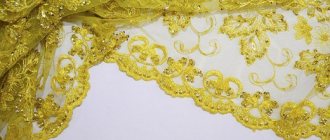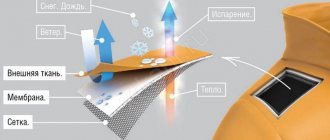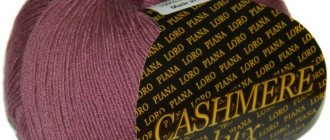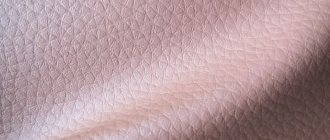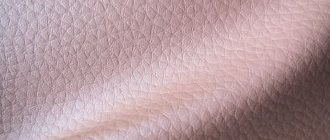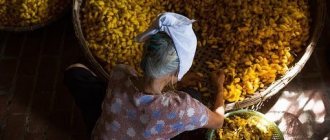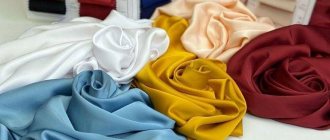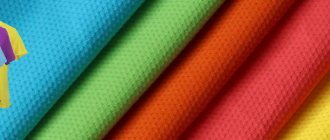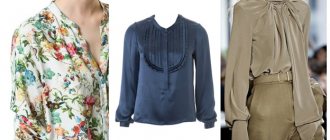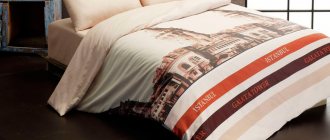Organza, like many other luxurious fabrics, was brought to Europe from the East at the end of the 18th century. What is the origin of the term "organza"? There is no clear answer to this question. According to one version, it is believed that the word came from the name of the American brand Logranza (1820), which produced various silk fabrics, according to another, from the name of the ancient Uzbek city of Urgench (Urganch in Uzbek), where they produced natural silk.
Organza quickly gained popularity in all countries, and to this day, it remains among the luxurious and sought-after fabrics. Organza was originally made from silk threads, and therefore was one of the most expensive fabrics and could be used by the wealthiest fashionistas.
To create such a fabric required a lot of work - complex processing and high-quality fibers. Therefore, organza was most often used to decorate clothes; collars and other elements were made from it. When polyester fibers appeared, organza became cheaper, while retaining its qualities.
And the qualities of this fabric are truly amazing, and this is due to the materials from which it is made, that is, silk, polyester or viscose. Modern organza contains almost 100% polyester.
Organza, despite the fact that it is thin and transparent, has strength and even rigidity, which allows it to maintain its shape and practically not wrinkle. The airy fabric is incredibly pleasant to the touch: soft, cool, smooth and weightless.
Depending on the treatment, the fabric can be either shiny or matte. Modern technologies have made it possible to create faceted transparent threads, and the material sparkles. It can shimmer in various rainbow shades, and can be plain or patterned. In the latter case, the patterns can be printed, embroidered or perforated.
What is organza
The word "organza" has several origins. It is known that the fabric was brought to Europe from the East at the end of the 18th century. Since that time, a silk spinning factory has existed in the Uzbek city of Urgench. It is assumed that the name of the fabric came from this city.
The Oxford Dictionary indicates that the name of the fabric comes from the American factory Logranza. The factory was engaged in the production of silk fabric.
Previously, only natural silk threads were used to produce organza. The material was very expensive and was available only to wealthy people.
It was difficult to process silk and obtain strong threads. The material was produced in small quantities and was used only to decorate clothes in the form of collars, cuffs, and hat decorations.
Then people learned to create artificial fibers, and making organza became easier. The material looks attractive. It is thin, transparent, and quite durable.
The fabric is smooth and slightly cool to the touch. It is tough and holds its shape well. The surface can be shiny or matte.
Modern organza consists of silk, viscose and polyester fibers. Transparency is achieved by tightly twisting the threads. This also ensures rigidity and the ability to keep its shape.
The color of the fabric is white and colored. You can make various patterns and embroidery on it. Modern technologies for applying patterns - printing and laser perforation.
Sometimes organza is confused with a veil. This fabric is softer, flows, and does not hold its shape. It is less transparent. When choosing between a veil and organza, it is better to give preference to the latter if you plan to sew a dress. Any option is suitable for curtains.
To view the fabric review:
Types of fabric
There are many varieties of matter, they differ in appearance:
- smooth, plain;
- rainbow - with vertical stripes smoothly blending into each other;
- chameleon - a special interweaving of multi-colored fibers ensures color changes depending on the light;
- with metallized threads - has a special shine;
- with gold or silver plating;
- organza flock - a material for creating accessories and interior elements, covered with a velvety-to-the-touch pattern of small fibers;
- “crash” - crushed texture;
- with embroidery;
- with perforation or printed pattern;
- jacquard - a combination of threads of different colors and thicknesses.
Floral fabric is used only for decorating bouquets. It is durable, yet thin and transparent. It can be plain or with a pattern.
View this publication on Instagram
Publication from Shtora in Kharkov (@kharkivshtory) February 14, 2021 at 7:19 PST
View this post on Instagram
Publication from LUXURY FABRICS ✨ (@tkani_barhat_) February 14, 2021 at 11:02 PST
Material properties
Depending on what fibers (natural, artificial or synthetic) are used in the manufacture of the fabric, organza may have different characteristics.
The material, which contains 100% polyester, has the following properties:
- resistance to deformation;
- crease resistance (slight);
- high light transmission;
- good tensile strength;
- resistance to organic solvents;
- low hygroscopicity;
- durability.
The characteristics of organza make the material extremely attractive for designers who create clothing models and decorate halls.
Where is organza used?
Organza is a decorative festive material. Its application is quite wide. In the home interior:
- window curtains - allow light to pass through well, giving the room lightness and airiness;
- dividing the room into zones - suitable for studio apartments;
- decoration of canopies.
Organza tulle with a pattern is used to decorate rooms for celebrations and banquets. Curtains with bright eyelets give the room an elegant look.
Delightful wedding dresses are made from white organza. Colored is used in creating costumes for oriental dances, evening and stage wear. Dresses with embroidery on organza look romantic and feminine.
Festive bows for girls are made from elegant material. Design gift wrapping and flower bouquets. Needlewomen use fabric to make cards and toys.
An original interior decoration in the European style - topiary. This is an artificial tree, the crown of which is made of fabric, decorated with ribbons, beads, and lace. It is believed that this product brings happiness to the home.
To see how to sew a complex fabric product:
See how to sew a skirt from fabric:
To view DIY - fabric decorations:
Application
The fashion for this material lasted until the first half of the last century, and in recent decades viscose was widely used for it. The advent of polyamide fibers led to the mass production of transparent fabrics that can rigidly record volume and are undemanding to care for. In this regard, organdy is currently not a very common material, however, in the wake of interest in natural materials, it is still being produced from cotton fibers. This beautiful natural material is well suited for trendy transparent blouses, dresses, and skirts. It is still used for a variety of decorations - elegant collars, ruffles, frills, as well as for luxury home textiles, especially lush transparent curtains .
How to wash and care for fabric
Organza is a capricious material when it comes to washing and ironing. It is resistant to stains, but hygiene procedures are still required periodically. Improper washing and ironing can deform the product.
Organza can be washed by hand or in a washing machine. It should be remembered that when machine washed, the fabric produces a lot of foam. It is better to use not powder, but special gel or capsules.
Clothing, especially those decorated with sequins or beads, should be washed by hand. Pre-soak in a soap solution at a water temperature of 40 degrees.
Then the item is carefully washed with stroking and rubbing movements. Do not roughly rub or twist the organza, as this will cause it to become deformed.
After washing, the product is rinsed with plenty of water. They don’t wring them out, but hang them on hangers so that all the water drains out. They can also be dried on hangers or on a horizontal surface, spread out.
Large items like organza tulle are difficult to wash by hand. When washing in an automatic machine, select the delicate cycle. Disable the spin and dry function.
Washed organza curtains can be immediately hung on the curtain. Under the influence of their own gravity, they straighten out, leaving no creases.
To turn fabric white, you can use oxygen or optical brighteners. Chlorine bleaches, like bleach, ruin things and leave yellow stains.
Snow-white fabric should not be dried in the sun, as this will turn it yellow. Any type of organza should not be dried near a heat source, as this will lead to deformation.
Iron the fabric on a delicate setting. A white cloth is placed under the item. You cannot use the steam function on the iron.
Products made from capricious fabric are recommended to be washed 3-4 times a year. Items with complex decorations should be taken to a professional dry cleaner. For machine washing, use special bags.
Careful care allows you to extend the life of the fabric and preserve its beauty.
Watch the video on how to properly wash tulle:
Compound
Organza fabric consists mainly of artificial fibers. If in former times the material was obtained from silk, now such varieties are not found. Even viscose variations are expensive, and silk cuts will be worth their weight in gold. To reduce the cost of production, factories switched to polyester. The result is a fabric that is dense, but transparent and light.
The most common is 100% synthetic. It is available in various colors, including glitter, chameleon effect, and embroidery. If the cut contains 35% polyester and 65% nylon, the fabric will be stronger and softer. It is often used for sewing wedding dresses, dance costumes, and decorations.
Features of cutting and sewing from organza
Smooth material slips and warps when cutting. To carefully cut a piece of the desired shape, the organza is laid out on a backing and secured with pins on the sides. The outline of the pattern is transferred using copy stitches.
The cuts fray a lot, so the allowances when cutting out are left large, 3–4 cm. When sewing, paper is placed under the material to avoid slipping.
Sewing on a sewing machine must be done with care so as not to damage the material. The needles should be sharp and the machine foot should be without jagged edges.
You need to process the edges with an overlock or zigzag, and they are laid twice. It is better to make the cut with hot scissors - this will seal the threads and prevent them from fraying. You can hem the edge with decorative tape, then the seam will look neat and will not fray.
Sewing curtain tape to the top edge of a curtain can be difficult due to the fabric slipping. First, it is grabbed with stitches by hand, and then sewn on by machine. The tape should be sewn slightly below the edge of the curtain so that it is not visible.
You can make ribbons from leftover organza and use them to tie the curtains in the middle. A large piece is suitable for patterning a lambrequin.
It can be difficult to sew up a hole in an organza item. The fabric is unraveling and does not hold the seam. This is easier to do on large canvases. If a hole has formed on a blouse or skirt, you can consider the option of decorating the hole.
For example, in the area of the hole you can sew a piece of lace or independently embroider a pattern on a piece of fabric and sew it on. You can carefully sew up the hole and decorate the seam with beads or bugles.
Watch the story about sewing:
Flaws
The fabric also has many disadvantages. Since it is synthetic, the hygiene of the fabric is questionable. Persons with hypersensitive skin cannot wear items made from this material. The rigidity that gives shape does not at the same time provide adequate wearing comfort. It is believed that the material is very caustic and not very pleasant to the touch.
The fabric does not shrink, which makes the work easier, but the raw edges crumble a lot, which requires significant allowances when cutting. Processing the cut is also not easy, and an inexperienced seamstress can ruin the product.
Pros of use
Externally, the fabric can be glossy and matte, plain and multi-colored, flat, smooth and voluminous, fluffy. Among the advantages of the fabric are:
- Excellent breathability. The canvas does not interfere with air or light. Prevents the formation of drafts;
- Does not block the penetration of sunlight. Does not fade in the sun, the room is well lit;
- Wear resistance. Service life 8-10 years, no wrinkles, no signs of deformation after washing and hanging;
What standards are used in production? What do they take into account?
In the manufacture of synthetic fabrics, incl. and organza, the standards prescribed in GOST 23433-79 are taken into account. Fabrics and piece goods made from chemical fibers.”
Color fastness:
- to light - GOST 9733.1-91;
- for washing - GOST 9733.4-83;
- for ironing - GOST 9733.7-83;
- to friction - GOST 9733.27-83;
- for organic solvents - GOST 9733.13-83;
And:
- air permeability - GOST 29298-2005;
- tensile tensile characteristics - GOST 3813-72.
Color spectrum
A color scheme is a combination of colors and their shades that are in harmony with each other, which means they can be combined in decor and textiles when decorating an interior.
Selecting the right colors for interior design is an important task, since different shades have the ability to influence mood and physical state: some tones excite the nervous system, while others, on the contrary, calm it.
Beige
This color is an excellent base for other richer and brighter shades. In addition, the palette of beige in milky, cappuccino, ecru and caramel shades allows it to be used in a monochrome design. Designers use this method to achieve the effect of calm and softness in the interior.
White
White organza curtains have the ability to visually enlarge the space. The color white evokes positive images: the white dove is a symbol of peace and friendship. There are more than 10 shades of white, both cold and warm, for example, platinum and milky tones. Choosing the right tone will allow you to harmoniously combine the tulle with the rest of the curtain composition.
The photo shows a classic-style dining room with window decorations in the form of white translucent organza curtains.
Green
The spectrum of green shades has a beneficial effect on well-being and mood, as it is associated with living nature. In this case, you can choose soothing warm and pastel colors for the bedroom or invigorating cold and bright ones for the living room.
Black
Designers often use this achromatic shade in the interior as a stylistic accent. For example, black organza curtains are a strict and effective element in the interior of a room with light walls, a high ceiling and modern-style furniture.
Blue
This is the name of the shade of blue in the spectrum. It has a direct association with clear skies and dreams. Using this color in window decoration helps achieve the effect of lightness and harmony.
Brown
This is a shade that is not included in the spectrum of primary colors. There are more than 100 shades of brown. Designers very often combine this color with beige tones.
Pink
An easy-to-see color created by mixing red and white. Delicate shades of pink are appropriate to use in the decor of children's rooms and bedrooms.
Yellow
In the color spectrum, yellow is between orange and green, so it combines well with these colors. It can also be used independently - as a base color (at low saturation) and as an accent on the window - in a bright version.
Red
This color has a powerful stimulating effect on mood, so its use in the interior should be measured and thoughtful.
Types of tulle
The photo of organza tulle shows options for textures, patterns and ways to design a window opening.
Synthetic fibers are intertwined with each other, sometimes with the addition of natural threads of different thicknesses, and a dense, good quality fabric is obtained.
Applying a textured, three-dimensional pattern is performed in several ways:
Note!
Curtains for windows - TOP 120 photo and video examples. Styles and shapes of curtains, their differences. Advantages and disadvantages of window curtainsTulle in the interior: types of tulle, pros and cons of the material. Selection of colors, lengths, quantities and patterns of tulle for different interiors (photo + video)
DIY curtains - instructions for sewing curtains with your own hands. Types of fabrics, colors and patterns for curtains. 120 photos + video reviews
- Embroidery;
- Printing method;
Mounting options for cornice
There are wall and ceiling mounting of cornices. When mounted on a wall, the cornice can be a special decorative element - with twisted tips, floral patterns or monograms.
- Eyelets. A metal or plastic sleeve installed in the fabric sheet strengthens the edges of the holes. A simple and stylish mounting method is suitable for interiors in a modern style.
- Loops. This mounting option creates a casual and fashionable window design.
- Rings. The traditional option of attaching curtains to a cornice using rings takes on a new meaning in combination with fashionable textures and drapery.
Decorating curtains
Decorating curtains is a whole range of ways to improve their aesthetic qualities.
- Lambrequins. The use of lambrequins in window decoration adds nobility and solemnity to the entire room.
- Pickups. Creating soft folds, adding dynamics or softness to a curtain composition is possible thanks to tiebacks.
- Buffs. The voluminous decor in the form of a puff at the top of the curtain has a pompous and luxurious look.
Styles
Interior style is a complex of distinctive properties inherent in different directions in finishing, furnishing and decorating premises.
Provence
French provincial style refers to the southern and light directions. In the interior, the use of this style creates a relaxed atmosphere of a country house.
Minimalism
The name of this style is derived from the word minimus - smallest. It accurately reflects his concept in interior and decor - conciseness, simplicity and precision.
The photo shows an interior in a minimalist style with monochrome decor on gray organza windows.
Classic
In the interior, a classic is the creation of exemplary and typical images. Namely, precise proportions, baroque or empire design of furniture and decoration. Textile design includes intricate patterns, lush draperies and expensive fabrics. The decoration uses beads, lace, curls, embroidery and gold.
Modern
When creating a modern style in a room, designers use fashion trends and experiment with finishes, colors and textures.
Hall
Multilayer curtains made of organza are an excellent solution for the hall. Most often, double designs are chosen. This product consists of two layers. The first is transparent, light, and the second is a material with a denser texture.
For the best effect, experiment with the floral palette. It is possible to use the “rainbow” type, that is, a combination of several shades of material. A striped product is distinguished separately, which is unusual and original for the texture of the material.
Dimensions
When choosing the parameters of a future curtain composition, in particular the length of the canvas, designers take into account:
- room height;
- color of walls and furniture;
- functionality of the room - living room, kitchen or bedroom.
Long
Floor-length or softly draping curtains on the floor will never go out of style. If the room is located on the south or southeast side, then long, thick curtains are suitable for protection from light. For those who love bright light, curtains made of light and light organza are suitable.
The photo shows long curtains made of brown translucent organza in combination with thick curtains.
Short
Curtains up to the length of the window sill can be used indoors for practical purposes - in the kitchen and in the nursery, to avoid frequent contamination. So it is with the aesthetics - in the design of a room with a modern style, the window frame is often decorated with short Roman blinds of dense texture. If the interior needs more light and lightness, then they are combined with airy floor-length curtains.
